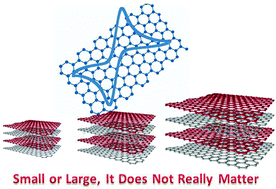Influence of parent graphite particle size on the electrochemistry of thermally reduced graphene oxide†
Abstract
Electrochemical applications of

* Corresponding authors
a
School of Physical and Mathematical Science, Division of Chemistry and Biological Chemistry, Nanyang Technological University, 21 Nanyang Link, Singapore
E-mail:
pumera@ntu.edu.sg
Fax: +65 6791-1961
b Department of Inorganic Chemistry, Institute of Chemical Technology Prague, Technická 5, 166 28 Prague 6, Czech Republic
Electrochemical applications of

 Please wait while we load your content...
Something went wrong. Try again?
Please wait while we load your content...
Something went wrong. Try again?
S. Y. Chee, H. L. Poh, C. K. Chua, F. Šaněk, Z. Sofer and M. Pumera, Phys. Chem. Chem. Phys., 2012, 14, 12794 DOI: 10.1039/C2CP41462G
To request permission to reproduce material from this article, please go to the Copyright Clearance Center request page.
If you are an author contributing to an RSC publication, you do not need to request permission provided correct acknowledgement is given.
If you are the author of this article, you do not need to request permission to reproduce figures and diagrams provided correct acknowledgement is given. If you want to reproduce the whole article in a third-party publication (excluding your thesis/dissertation for which permission is not required) please go to the Copyright Clearance Center request page.
Read more about how to correctly acknowledge RSC content.
 Fetching data from CrossRef.
Fetching data from CrossRef.
This may take some time to load.
Loading related content
